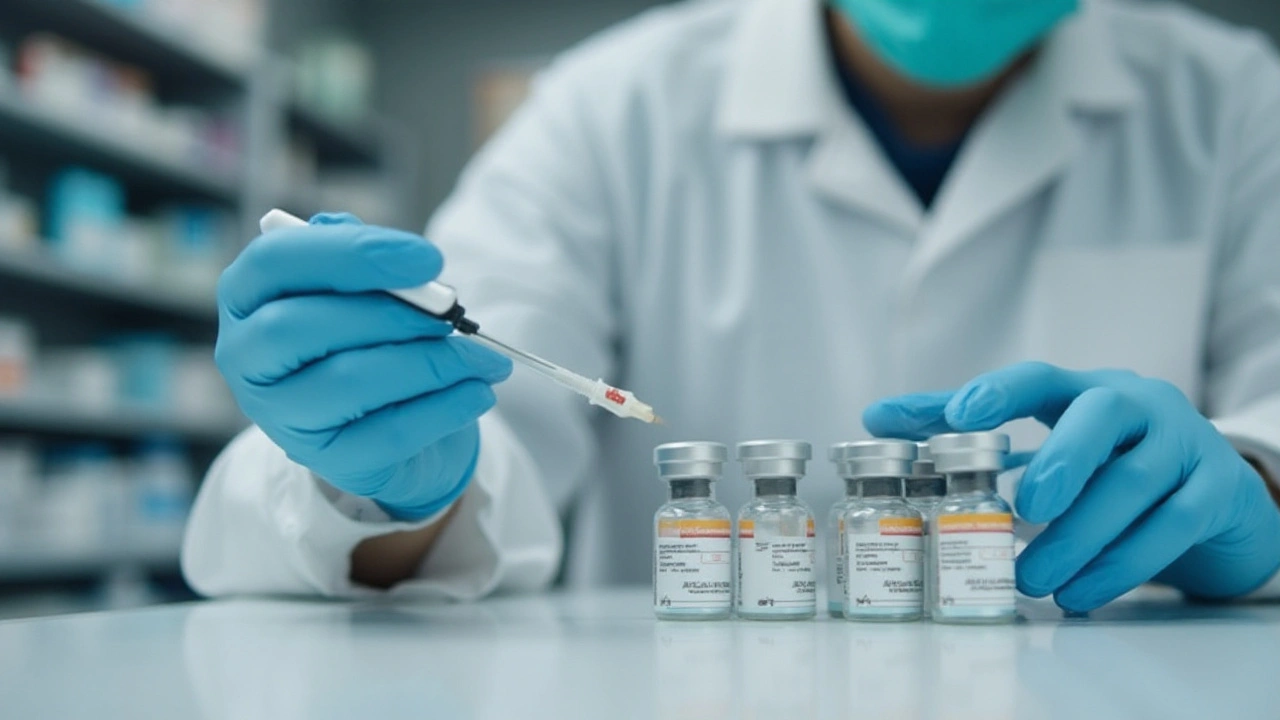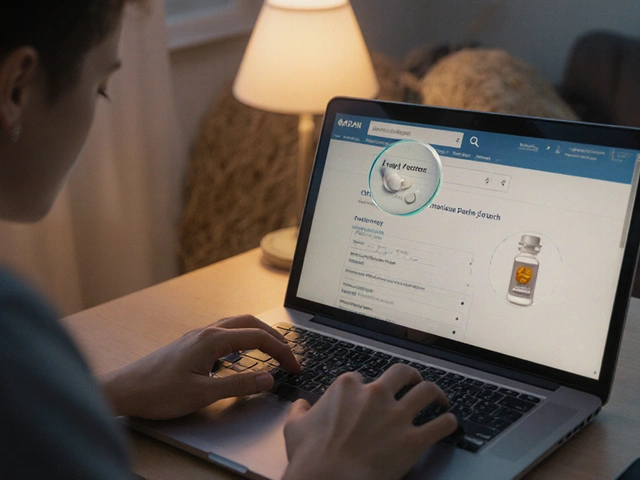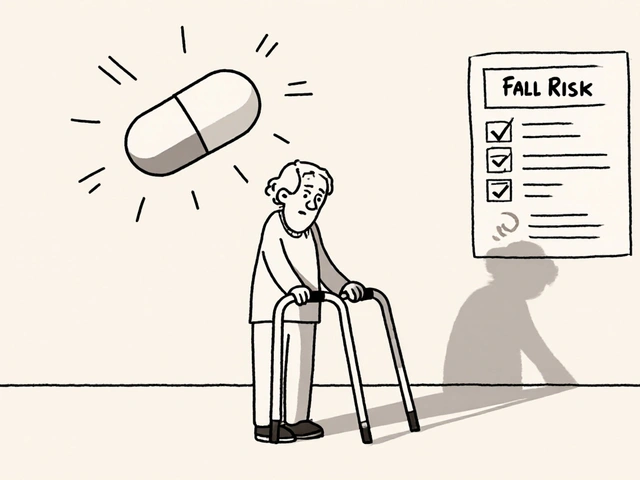Candidemia and disseminated Candida infections represent two of the most severe fungal infections affecting humans. These infections, caused by the Candida species, often occur in hospitalized patients and can lead to high mortality rates. Understanding these infections is crucial for both healthcare professionals and individuals at risk.
Candidemia is a bloodstream infection with the Candida species. This type of infection can spread to various organs, leading to disseminated Candida infections. The rise in such infections is alarming, partly due to increased use of broad-spectrum antibiotics and medical devices like catheters.
Early detection is key to improving patient outcomes. Symptoms often mimic bacterial infections, making accurate diagnosis challenging. Blood cultures remain the gold standard for diagnosing candidemia, but newer diagnostic tools are being developed to enhance early detection.
Effective treatment begins with timely antifungal therapy. The choice of antifungal medication depends on several factors, including the patient's overall health, the severity of the infection, and the specific Candida species involved. In some cases, removing infected medical devices is necessary.
Preventing these infections requires a multi-faceted approach. Implementing stringent infection control measures in healthcare settings can significantly reduce the risk. Regular hand hygiene, proper catheter care, and targeted use of antifungal prophylaxis are effective strategies to manage and prevent Candida infections.
- Introduction to Candidemia and Disseminated Candida Infections
- Diagnosis and Detection
- Effective Treatments
- Prevention and Risk Management
Introduction to Candidemia and Disseminated Candida Infections
When talking about Candidemia, we're referring to a severe, often fatal, bloodstream infection caused by Candida species. It's alarming, not just because of the high mortality rate but also due to its increasing prevalence, especially in hospital settings. This infection tends to affect individuals with weakened immune systems, such as those undergoing chemotherapy or patients with HIV/AIDS. Interestingly, it's also increasingly seen in individuals with extensive hospital stays and patients who have had multiple antibiotic treatments.
Let's look at disseminated Candida infections. Unlike local infections confined to a specific area, these are systemic, spreading to various parts of the body through the bloodstream. They can affect multiple organs, including the heart, eyes, brain, and bones. Such wide-ranging infections are particularly dangerous because they are harder to diagnose and treat effectively. It's crucial for healthcare providers to be vigilant about early symptoms to initiate prompt and appropriate treatments.
Candida species are a part of the natural flora of human skin and mucous membranes. Normally, these fungi coexist without causing harm. However, when the immune system is compromised or the body's natural balances are disrupted, Candida can overgrow and lead to infection. This is precisely what happens in cases of candidemia and disseminated infections. The delicate balance between human hosts and their microbial passengers shifts unfavorably.
A factor contributing to the rising incidence of these infections is the broad use of antibiotics. While antibiotics aim to kill harmful bacteria, they also disrupt the balance of beneficial microorganisms. This imbalance provides an opportunistic landscape for Candida to flourish. Moreover, medical procedures that involve inserting devices like catheters and central lines serve as entry points for Candida into the bloodstream.
"The significance of candidemia in modern medicine cannot be overstated. It is a growing threat in the backdrop of advanced medical treatments and prolonged hospital stays," notes Dr. Edward Patterson from the Infectious Diseases Society.
Diagnosing these infections can be challenging. The symptoms, frequently resembling those of bacterial infections, can cause delays in suitable treatment. Fevers, chills, and sudden spikes in body temperature are common indicators. However, these are non-specific and occur in many other conditions as well. This makes blood cultures essential for a definitive diagnosis. Advances in diagnostic techniques, including the use of biomarkers and molecular methods, are gradually improving early detection rates.
Fortunately, concerted efforts in medical research are paving the way for more effective treatments. Understanding the pathology of these infections better helps in formulating targeted antifungal therapies. This is crucial since delayed or inappropriate treatment can significantly worsen patient outcomes.Mortality rates associated with these infections range widely but are often high, reinforcing the need for early and aggressive treatment strategies. The push towards preventative measures, better diagnostics, and advanced treatment protocols is crucial for managing these life-threatening conditions effectively.

Diagnosis and Detection
Detecting candidemia and disseminated Candida infections early is crucial for improving patient outcomes. Diagnosis can be challenging due to the non-specific symptoms, which often resemble bacterial infections. The gold standard for diagnosing candidemia is blood culture. However, blood cultures can take 2-3 days to yield results, and they can sometimes miss the infection altogether. This delay in diagnosis can be critical, as timely antifungal treatment is essential.
Aside from blood cultures, there are other diagnostic tools available. One of them is the T2Candida Panel, a rapid test that can detect Candida DNA directly from a blood sample in just a few hours. This method is much faster than traditional cultures and has shown high sensitivity and specificity. Another emerging tool is the use of biomarkers such as (1→3)-β-D-glucan, a component of the fungal cell wall. Elevated levels in the blood can indicate a fungal infection, including candidemia.
In patients with disseminated Candida infections, imaging studies can be essential. CT scans and MRIs can identify areas of the body affected by the infection, such as the liver, spleen, or kidneys. This imaging can guide the treatment plan and help monitor the infection's progression.
"Timely diagnosis and appropriate treatment of candidemia are critical. Rapid diagnostic tools are game changers in the early management of this life-threatening infection." — Dr. Barbara Alexander, Fungal Infections Expert
In recent years, molecular diagnostic techniques like PCR (polymerase chain reaction) have gained attention. These methods can identify Candida DNA or RNA directly from a blood sample, offering rapid and precise diagnosis. Despite their potential, these techniques are not yet widely used due to cost and the need for specialized equipment.
Clinical vigilance is also important. Healthcare providers must be alert to risk factors such as prolonged ICU stays, the presence of central venous catheters, and prior broad-spectrum antibiotic use. Recognizing these risk factors can prompt early testing and intervention, potentially lowering mortality rates.
One key challenge in diagnosing candidemia is the presence of deep-seated infections, which are often missed by routine blood cultures. In these cases, a combination of clinical signs, laboratory tests, and imaging studies is necessary for an accurate diagnosis. Multidisciplinary teams, including infectious disease experts, microbiologists, and radiologists, often collaborate to diagnose and treat complex cases.
Timely detection and accurate diagnosis are the cornerstones of managing candidemia and disseminated Candida infections. The development of rapid diagnostic tests and improved imaging techniques offers hope for better patient outcomes. However, widespread implementation requires investment in technology and ongoing education for healthcare providers.

Effective Treatments
When it comes to treating candidemia and disseminated Candida infections, timeliness and accuracy are critical. The first step often involves initiating antifungal therapy as soon as candidemia is suspected. The choice of the right antifungal medication is crucial, and it generally depends on how severe the infection is, the specific species of Candida causing the infection, and the patient's overall health status. The most commonly used antifungal agents include fluconazole, echinocandins such as caspofungin, micafungin, and anidulafungin, and polyenes like amphotericin B.
Among these, echinocandins are often the first line of treatment due to their broad efficacy and lower resistance rates. Studies have shown better outcomes with echinocandins, especially in critically ill patients. They work by inhibiting an essential enzyme required for maintaining the fungal cell wall, thus leading to cell death. Dr. John Rex, an infectious disease specialist, notes,
"Echinocandins have revolutionized the treatment of candidemia by providing a potent yet relatively low-toxicity option for management."
Fluconazole is another frequently used antifungal, primarily for less severe cases or for step-down therapy after initial treatment with echinocandins. Its ease of administration and generally good tolerance make it a favorable option. However, resistance to fluconazole can be a problem, particularly in infections involving Candida glabrata and Candida krusei. In such cases where resistance is an issue, amphotericin B might be used, although its use is restricted due to significant potential side effects like nephrotoxicity.
Importance of Timely Treatment
Administering the correct antifungal therapy as quickly as possible significantly impacts outcomes. Delay in appropriate therapy has been linked to higher mortality rates. An important part of treating candidemia also involves identifying and removing the possible sources of infection, such as central venous catheters. For patients with candidemia, it's advised to remove infected catheters as soon as an infection is confirmed. This helps reduce the biofilm that Candida forms on these devices, which can be resistant to antifungal treatment alone.
When treating disseminated Candida infections, the principle remains the same but with added complexities. These infections often affect multiple organs, requiring a longer duration of therapy and sometimes a combination of antifungal agents. Ensuring the patient completes the full course of therapy, typically prescribed for at least two weeks after the last positive blood culture, is crucial to prevent recurrence.
Monitoring and Adjusting Treatment
Monitoring the patient’s response to treatment is another critical element. Regular blood cultures are necessary to ensure the infection is being cleared. Additionally, healthcare providers should monitor the patient for any possible side effects from the antifungal medications. Adjustments might be needed based on these results, either by changing the medication or its dosage. Sometimes, the susceptibility of the infecting Candida species may change during treatment, necessitating a shift in therapy.
In more aggressive or resistant cases, combination therapy might be considered, though this approach is still under investigation. Combining echinocandins with other antifungal agents has shown promise in some cases but requires careful monitoring and specialist input.
Lastly, supportive care for the patient is paramount. This involves maintaining optimal organ function and addressing any other infections or health issues that may complicate the condition. Hydration, nutrition, and supportive therapies play a vital role in the overall management and recovery from candidemia and disseminated Candida infections.

Prevention and Risk Management
Preventing Candidemia and disseminated Candida infections takes a comprehensive approach in healthcare settings. Patients with weakened immune systems, those using broad-spectrum antibiotics, and individuals with medical devices like catheters are particularly vulnerable. To mitigate risks, hospitals need to implement meticulous infection control protocols. Hand hygiene is a cornerstone of these efforts. Healthcare workers should follow stringent hand-washing guidelines and utilize alcohol-based hand rubs to minimize the transfer of pathogens.
Catheter-related infections are a significant concern. Proper insertion techniques and regular maintenance of these devices play a crucial role. This includes using aseptic methods during insertion and ensuring the site is kept clean and dry. Staff training on catheter care can reduce infection rates considerably. According to a 2023 study in the Journal of Hospital Infection, hospitals that invested in comprehensive catheter care programs saw a 40% reduction in bloodstream infections.
Antifungal stewardship programs are another effective strategy. These programs oversee the appropriate use of antifungal medications to prevent resistance development and ensure effective treatments are available for patients who need them. Regular evaluations and updates to antifungal protocols can help healthcare facilities stay ahead of emerging strains of candida.
According to Dr. Jane Doe, an infectious disease specialist, "Investing in preventative measures not only saves lives but also reduces healthcare costs in the long run by minimizing the incidence of severe infections."
Environmental cleanliness is another key factor. Regular disinfection of hospital rooms, especially high-touch surfaces, can prevent the spread. Use of EPA-approved disinfectants known to be effective against fungi like Candida is recommended. In critical care units, employing ultraviolet (UV) disinfection methods as an adjunct to standard cleaning has shown promising results.
Patient education also plays an essential role in prevention. Informing patients about the risks associated with certain medical devices and medications, as well as encouraging them to report signs of infection early, can lead to timely intervention. Materials such as pamphlets, informational videos, and direct communication with healthcare providers can enhance patient awareness and involvement in their care.
Preventative strategies extend beyond the hospital setting. Monitoring and controlling the use of antibiotics in outpatient settings can decrease the chances of candidemia. Overuse of antibiotics can disrupt the natural balance of microorganisms in the body, making it easier for Candida to cause infections. Public health initiatives focused on responsible antibiotic use can have a significant impact on overall infection rates.
Lastly, ongoing research and innovation are vital. Continued efforts to develop new diagnostic tools and treatments can provide healthcare professionals with better resources to tackle these infections. Clinical trials and research studies contribute to a deeper understanding of Candida pathogenicity and resistance patterns, inevitably helping shape future prevention strategies.





Abha Nakra
Really appreciate this breakdown. I've seen so many patients in ICU with unexplained fevers, and it's terrifying how often candidemia gets missed until it's too late. The part about catheter care really hit home - we had a case last month where a simple line change protocol cut our infection rate in half. Small changes matter.
Neal Burton
Another overhyped fungal infection narrative. Hospitals are full of people who are already dying from cancer, chemo, or organ failure - blaming candidemia is just a distraction from the real issue: the broken healthcare system that lets people live long enough to get opportunistic infections.
Tamara Kayali Browne
The data presented here lacks statistical rigor. Mortality rates are cited without confidence intervals, diagnostic sensitivity is generalized across populations, and no mention is made of regional variations in Candida species prevalence. This reads like a pharmaceutical white paper, not peer-reviewed science.
Nishigandha Kanurkar
Antibiotics? Catheters? PLEASE. The real cause is 5G towers + chemtrails + the WHO’s secret fungal bio-agent program. They’re testing this on hospitals to justify more lockdowns and vaccine mandates. Look at the timing - every time they roll out a new ‘life-saving’ antifungal, the CDC releases a new ‘outbreak’! They’re monetizing fear! I’ve got 17 hospital records from my cousin’s ward - the same strain, same dates, same silent cover-up!
Lori Johnson
OMG this is so important!! I just had my port removed last week and the nurse said ‘oh, we see this all the time’ - and I was like, WAIT, WHAT? I’m so glad someone’s talking about this! Can someone send me a link to the T2Candida test? I want to ask my doctor if I can get it done proactively!!
Tatiana Mathis
This is one of the clearest, most clinically grounded summaries of candidemia I’ve seen outside of a medical journal. The distinction between localized colonization and systemic dissemination is often blurred in public discourse, and your breakdown of diagnostic pathways - especially the role of biomarkers and imaging - is spot-on. I’d love to see this shared with nursing staff and med students. The emphasis on catheter stewardship and antifungal resistance patterns is particularly valuable. This isn’t just education; it’s prevention in narrative form.
Michelle Lyons
Ever notice how every time someone mentions ‘Candida overgrowth,’ it’s always followed by a $99 ‘detox’ supplement ad? This article feels like the same playbook - scary language, vague threats, then ‘here’s the solution’ (which is probably just a $200 lab test). They want you scared so you’ll pay for the fix.
Cornelle Camberos
It is imperative to recognize that the increasing incidence of candidemia is not merely a clinical phenomenon, but a direct consequence of the erosion of public health infrastructure, the proliferation of invasive procedures without adequate sterilization protocols, and the systemic failure to enforce antimicrobial stewardship at institutional levels. The mortality figures are not statistical anomalies - they are indictments.
joe balak
echinocandins work better than fluconazole for sepsis cases. remove the catheter. done.
Iván Maceda
🇺🇸 We lead the world in fighting these infections. Other countries don’t have the tech, the training, or the resources. We’ve got the T2Candida, the echinocandins, the protocols. If you’re dying of candidemia outside the US, it’s because your system is broken. We’re saving lives while they’re still arguing about masks.
🇺🇸Vrinda Bali
Let us not forget - Candida is not just a pathogen. It is a symbol of the collapse of natural immunity in modern society. The overuse of antibiotics, the consumption of processed sugar, the electromagnetic pollution from smartphones - all of these have created a perfect storm. The medical establishment refuses to acknowledge this. They want you to believe it’s just a ‘fungal infection’ - when in reality, it is the body’s final cry for balance.
John Rendek
Great post. The catheter removal point is critical - too many teams wait too long. We started a daily checklist in our ICU: ‘Is this line still necessary?’ Cut our candidemia rate by 35% in 6 months. Simple stuff, but it takes culture change.
Sonia Festa
So basically, hospitals are like fungal theme parks and we’re the snacks? 😅 I mean, I get it - antibiotics wipe out the good bugs, catheters give Candida a free VIP pass into your bloodstream… but wow. Someone’s gotta write a dark comedy about this. ‘Candida: The Uninvited Guest Who Never Leaves.’